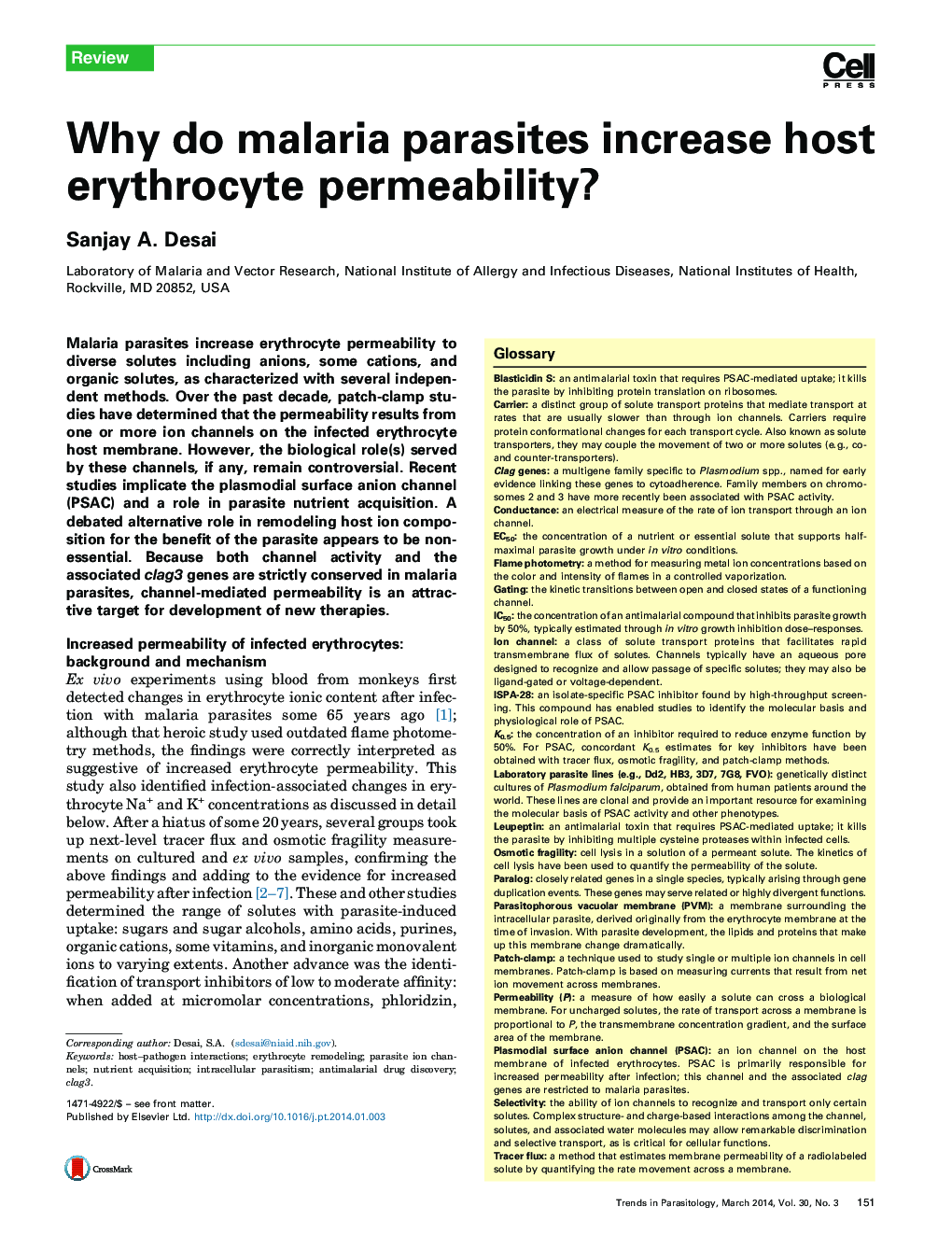| Article ID | Journal | Published Year | Pages | File Type |
|---|---|---|---|---|
| 3423120 | Trends in Parasitology | 2014 | 9 Pages |
•Malaria parasites increase the permeability of their host erythrocyte to diverse solutes.•The plasmodial surface anion channel, as determined by clag genes, plays a key role.•These channels function to allow nutrient uptake by the intracellular parasite.•Host cell cation remodeling is an unnecessary byproduct of the channels.
Malaria parasites increase erythrocyte permeability to diverse solutes including anions, some cations, and organic solutes, as characterized with several independent methods. Over the past decade, patch-clamp studies have determined that the permeability results from one or more ion channels on the infected erythrocyte host membrane. However, the biological role(s) served by these channels, if any, remain controversial. Recent studies implicate the plasmodial surface anion channel (PSAC) and a role in parasite nutrient acquisition. A debated alternative role in remodeling host ion composition for the benefit of the parasite appears to be nonessential. Because both channel activity and the associated clag3 genes are strictly conserved in malaria parasites, channel-mediated permeability is an attractive target for development of new therapies.
